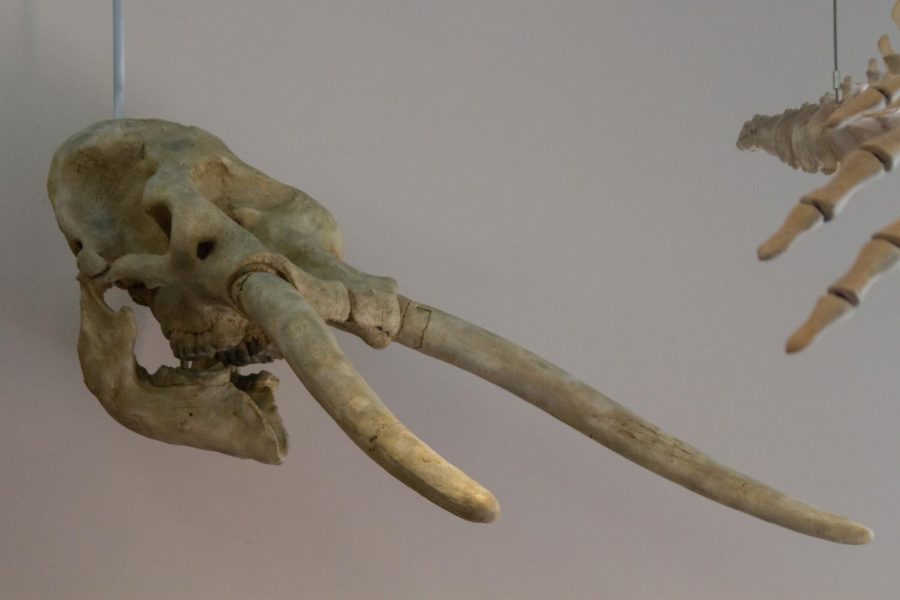Biology professor reflects on gomphothere discovery and restoration
Dr. Peter Houde, biology professor and curator of the Vertebrate Museum at New Mexico State University, was the man to call when nearly 10 years ago he was informed about some geological remnants found in a quarry in Mesquite, New Mexico, south of Las Cruces.
On September 9, through a public Zoom presentation, he reflected on the years long process of restoring these pieces of history of an animal that many people may not know of – the gomphothere.
For brief context, the gomphothere is a mammal that is a member of extinct elephants dating back to the Oligocene Epoch, approximately 30 million years ago.
After being informed about the discovery of a gomphothere skull in New Mexico, Houde explained the enthusiasm he felt about taking on this restoration project. He said that Eddie Binns, owner of the quarry and NMSU alumnus, wanted the skull to be kept locally and that’s where Houde felt there was no better place for it than here at NMSU.
“Several years down the road, this finally came to my attention not the fault of Eddie Binns he had been offering it up to various folks at NMSU. He wanted it to stay in the area and nobody really expressed any interest into it until somebody just sort of anecdotally mentioned it to me and I was like wow are you kidding, one of these things, we would love to have it,” Houde said.
The process of extricating the skull from the earth was much trickier than anticipated and prompted Houde to spend years reconstructing the shattered pieces.
“It was not properly prepared before we were able to take it out and it broke into literally thousands of pieces…many of them as small as pennies and it was just a disaster, just heart sinking,” Houde said.
Houde explained that after the skull broke, he took all the pieces back to campus and began the process of reconstruction. Through perseverance, Houde was able to make progress and was slowly able to see the gomphothere skull take shape.
“It started to show some encouragement to us and that things actually started to go together and it started to look like a skull again it’s going to work…it’s a giant jigsaw puzzle honestly,” Houde said.
Part of the reconstruction process required Houde to compare other elephant skulls and utilize prior knowledge for guidance on how to proceed. For the actual construction, Houde reinforced the remnants of the skull with rebar and fiberglass and recruited outside help to put together the frame.
An outside company from Colorado, Gaston Design, provided the framework and casting of the skull which allowed for its official display to be possible.
The skull hangs in the presence of other fossils that are part of NMSU’s Vertebrate Museum housed in Foster Hall.

Ernesto Cisneros is a senior here at NMSU studying Journalism & Media Studies along with Government (Political Science). He also has two minors in...

